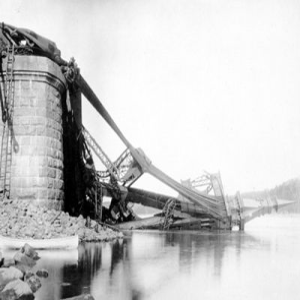

On this day in Labor History the year was 1907.
That was the day that became known for the Quebec Bridge Disaster in Canada.
Workers were building a cantilever bridge over the St. Lawrence River.
This was not an easy task.
The river was two miles wide at its narrowest point.
The river was deep, moved quickly, and was icy in the winter.
But in the late 1880s, businessmen in Quebec who wanted to keep up in trade with Montreal, decided the river had to be spanned.
The project did not begin for more than a decade due to a lack of funds.
Finally, the Canadian government supported the project to improve the nations railway infrastructure.
Theodore Cooper, a respected American bridge designer was signed on for the project.
Despite concerns about the bridge design, he never visited the site due to illness.
Eighty-six men were working on the project that fateful day.
Their work day was drawing to a close when the bridge suddenly collapsed.
Seventy-five men plunged to their deaths.
Some of their bodies were never found.
The bridge collapsed because of design flaws.
The official report of the disaster noted that the loss of life “might have been prevented by the exercise of better judgement on the part of those in responsible charge of the work for the Quebec Bridge and Railway Company and for the Phoenix Bridge Company.”
Unfortunately, that was not the last tragedy trying to cross the St. Lawrence.
After the bridge collapse, the Canadian government took over the project.
A partial collapse on that effort killed thirteen more workers in 1916.
The bridge finally opened in 1917.
Its completion came at high price. Costing $22 million and eighty-six lives.
More Episodes
All Episodes>>You may also like
Creat Yourt Podcast In Minutes
- Full-featured podcast site
- Unlimited storage and bandwidth
- Comprehensive podcast stats
- Distribute to Apple Podcasts, Spotify, and more
- Make money with your podcast











